It’s been a busy couple of months, so busy that we’ve been negligent on blogging here, on our technical and work tech blog sites.
We spent five weeks in Portland, Oregon before heading up to our current location in Gig Harbor, Washington. We’ve been focused on Portland for quite some time as our final landing spot, but just waiting for the right time to transition and the right opportunity.
For those who are unaware, Portland is has the largest floating home community in the United States. First things first- We need to get our terminology straight.
House Boat
Houseboats are commonly on a pontoon type platform and are easily maneuverable. A houseboat always has steering like a standard boat and is made to be moved on a regular basis, not just by day, but by the minute. They are used primarily on lakes are are made from standard boating materials and have paint jobs that even look like cruising boats.
House Barge
A barge, although not as maneuverable as the houseboat, most often has a motor or can be easily towed to another spot. Although quite steady, it is floating and while on it, you can feel rocking of waves and rougher water. They are commonly kept to canals and rivers.
Floating Home
A floating home is a bit different. It is MOORED to the slip and is rarely, if ever moved. To move a floating home is a cost of $30K or more. It is held in place by chains, ropes and secured sections to the floats that are part of the foundation the floating home is built on. Although the house moves up and down with the tides and such, it is very stable and you rarely, if ever feel any movement of the water beneath it.
The homes can be by themselves, but it’s more common to see them part of an existing moorage, which offers strong support of docks and “dolphins”, which are tall metal and wood supports that have been sunk deep into the river or lake bed. These homes are often grouped together with other floating homes into floating home communities. The concept was based off the original dock moorage boats were once housed there before people decided it was just as pleasant to live at too, so the setup can be very different, depending on the moor age. There are some that are quite shallow, with water on both sides, there are others only two houses deep, but then there are those called “finger slips”. These slips, the spot in the dock that the floating home slips into, which are designed similar to fingers on a hand. There can be many of these finger slips in a community, making it feel closed in. This was one of the reasons we didn’t consider Seattle, as you can see from the picture below, finger slips, 6 or more deep are quite common there. Seeing the open water is dependent on the slip you’re able to purchase or the upper floors of your home:
As finger slips are the most common in Seattle and realizing that the cost for real estate would be at least twice what you will pay in Portland for the same quality and size is enough to make you reconsider.
Like barges and houseboats, floating homes are built on lakes, rivers and bays, because water is less turbulent there. Even on the Columbia and Willamette rivers in the Portland area, the houses are primarily focused in narrow regions between land and an island that can helps to deter from heavier currents.
The foundation is one of the vast differences a floating home is built on and is called a float. It’s a combination of pressure filled barrels and huge logs. They score the quality of a float on a scale of 1-5. 5 being a brand new float and 4 being the score for a high quality home. When you purchase a floating home, you also have a float inspection performed by a certified inspector, which includes a diver that investigates the quality of the underbelly and structure of the float to ensure it can support your new investment. 20 year ratings are part of a quality inspection and make sense when purchasing a home. The inspection will include detailed information on any areas that may need to be reinforced/repaired. Although a float inspection is good for five years, a remodel will automatically make void a float inspection.
Rent vs. Own
Moorage communities your home resides in are each very different, too. You can like a house, but not like a moorage and the recommendation is that you find a floating home that you can like both. This happened for Tim and me when we found a home we really liked, but the moorage had a history of over-charging it’s residents vs. the value they provided for services. Most moorages charge fees each month to cover trash, sewer, water and other utilities on an average of about $300. If the moorage has built out an agreement to include upkeep to numerous docks, extra gated parking, dredging of the moor or other maintenance, the fee can go up to $700. For the first house that we fell in love with, it was $1000 per month. This would be an extra $12K per year over mortgage and other living expenses that was difficult to justify and most likely why this home was still on the market for as lovely as it is.
Owning your slip brings the cost for the monthly fees down to just the cost of utilities per month and this can save a lot of money in the long haul. The overall cost of the home will increase when the slip cost is included, as a slip runs around $100K+ but if you plan on staying in the home for 10 years or more, it’s much less expensive vs. the additional cost on the house when you consider the added value, etc.
Location, Location, Location
The last consideration is where you will be in Portland. We looked up river on the Columbia at the newer moorages, but found they often had strict HOA like policies, including not allowing dogs, rules about colors of paint, type of siding and roofing allowed.
I really love the quiet of downriver, but the communities are around 40 minutes from Portland. These communities are still quite rural and greater distance from an airport than we would prefer with our jobs.
Even in the main community area of the floating homes on the Columbia, there are those that look out over industrial docks and some that are in main traffic areas for boating.
Our Choice
We have put a floating home under contract in Portland on the Columbia. We knew to get what we’d want, we’d need to do a remodel, but remodeling a floating home can be a as scary as it is rewarding. After looking through a ton of homes online, researching and working with a great real estate agent online, we built out a list of what our needs vs. wants vs. do not want were and were able to visit about 20 floating homes with safety measures in place during the pandemic. Our top requirements were:
- A house between 1000 and 1500 sq ft.
- Easy to remodel to an open floor plan.
- ”Good bones” which means, float with a rating of 4, good windows roof and structure.
- Slip that wasn’t on a finger slip and that had at least one side open to the river.
- Low fee ownership on moorage
- Close parking and guest parking would be nice.
- A nice sized float that will serve as our “yard”.
- Boat parking for later on
Our contract is for the gray home with the gray roof with the white boat in front of it:
This house meets all our requirements and the moorage is rare in that its also only one home deep. There aren’t any homes behind it, only the sailboats in front. We have water in front and a narrow waterway behind us.
The moorage is incorporated for pretty much the homes you see in this picture. We have a corporation that all the maintenance and business for the floating home moorage requires with us all equal owners in it. This results in fees of only $200/month. The house has solar, so we’re on the cheap for electricity, (solar panels are on the south side of the roof, out of view in this picture.)
The floor plan is a bit screwy. It’s quite open, but out of date. It has a stairwell in the center, but the plan is, we’ll gut the interior and remodel the whole thing. We’ll extend the upper deck to include the entire front of the home, add windowed doorways that will open up to the front float and add trim and a larger deck on the front.
I’ve been pretty busy drawing up initial plans for the new interior and have picked out everything from the new floating stairs provider, to cabinets to windows and doors. There’s a lot, but it will be worth it.
After all of this, hopefully the remodel will be done in three months, as we’ll continue to stay in the RV until the remodel is done, allowing the contractor to finish quicker, then we’ll sell our 5th wheel and downsize to a smaller airstream. The goal is, during the rainy months in Portland, (December-March) we’ll get in the airstream and go south to California to enjoy some much needed sun and then return to our lovely floating home during the spring, summer and fall.
That’s the plan, cross your fingers.
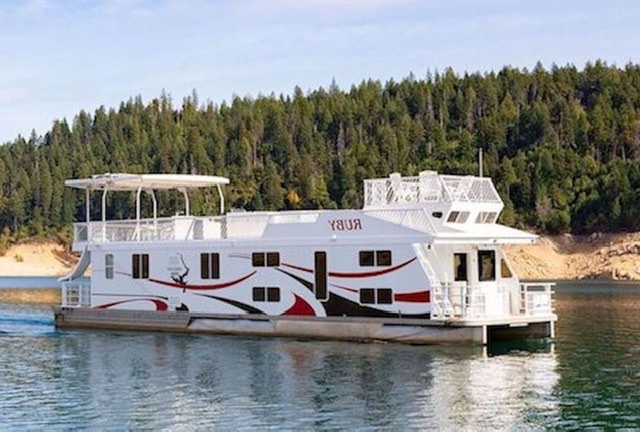
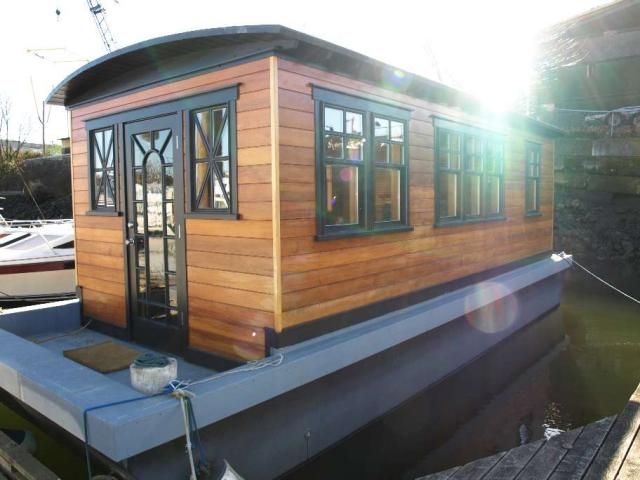
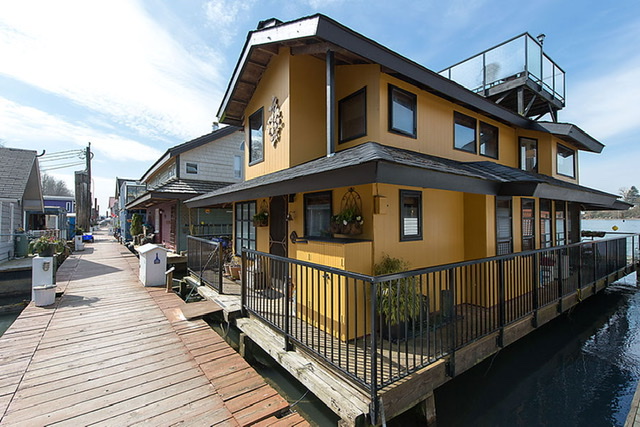
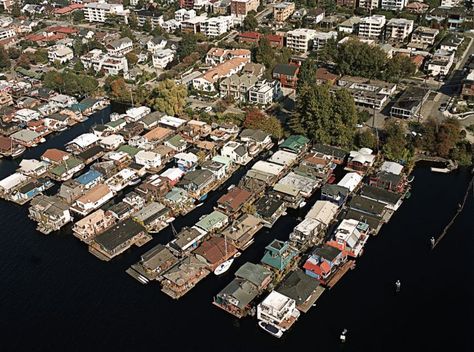
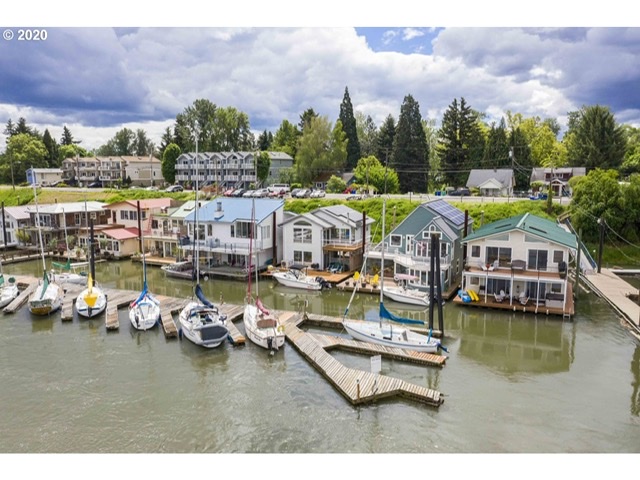



WOW! I never knew there were so many distinctions between house boats/barges/floating homes. Congratulations on the purchase! You two really are adventurous! I love it. Can’t wait to see the remodel but it looks cool even without the remodel! Love the blog!